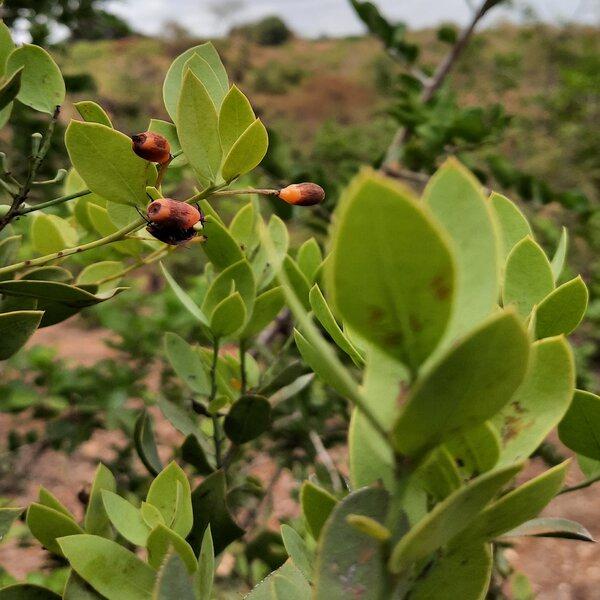Gerald Kaniaru
Other projects
6 Feb 2020
Community-Based Conservation of Locally Threatened, Medicinal Securidaca longepedunculata Fresen (Violet plant); For the People, by the People in the Drylands of Kenya
17 Jun 2021
Preserving Traditional Indigenous Knowledge on Locally Threatened Medicinal Plants, Meeting the Bonn Challenge and Building Community Resilience against COVID-19 in the ASALs of Kenya
Osyris lanceolata (African sandalwood) is an evergreen, slow-growing, hemiparasitic, and drought-tolerant tree listed under Appendix II of the Convention on International Trade in Endangered Species of Wild Fauna and Flora (CITES) (CITES, 2016). It is threatened by illegal logging and trade for the production of perfumery and medicinal products (CITES, 2016; Mugula, et al., 2021). This is owing to the rising demand for the species’ essential oils from Africa, Europe, the Middle East, and East Asian countries (CITES, 2016).

Osyris lanceolata (African sandalwood).
From the previous second Rufford Grant, it was observed that most of the local community members are unaware of the species’ ecosystem and economic value and are lured by sandalwood traffickers to over-harvest and sell its logs to them at US$100 for a full 4-wheel double cabin (Kaniaru & Ngumbau, 2022). Additionally, community members unsustainably exploit the species and its host plants as fuel, resulting in a rapid decline in their population sizes and survival rates. Furthermore, inadequate data on the current status of African sandalwood populations threatens the species’ survival in the wild (CITES, 2016).
This project will:
1. Reduce illegal African sandalwood logging and trade of African sandalwood by developing and implementing an illegal African sandalwood trade prevention strategy; raising community awareness of the species' ecosystem and economic value and building their capacity to protect, conserve, and restore the species, its host plants, and its habitats; and fencing its habitats to prevent further encroachment and degradation.
2. Determine the current African sandalwood population status by assessing, mapping, and documenting its population size, distribution, and regeneration patterns.
3. Increase the population size of African sandalwood and its host plants through mass-propagation and planting in suitable threat-free sites and on-farm as alley-crops and woodlots.
4. Reduce the local community’s unsustainable use of African sandalwood and its host plants as fuel by promoting paper-log briquette use as an alternative, long-term fuel source.